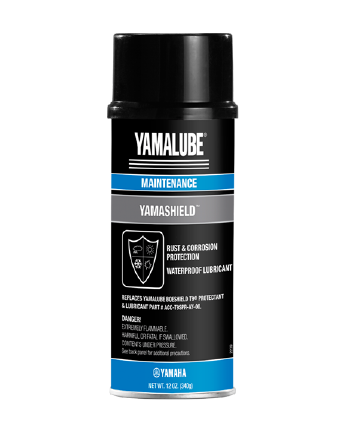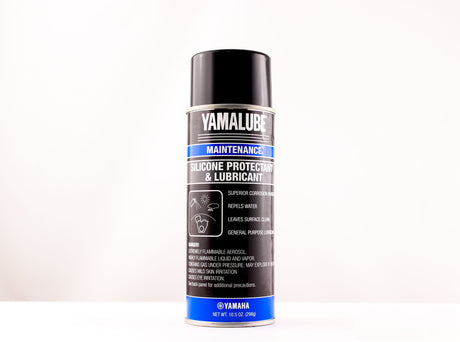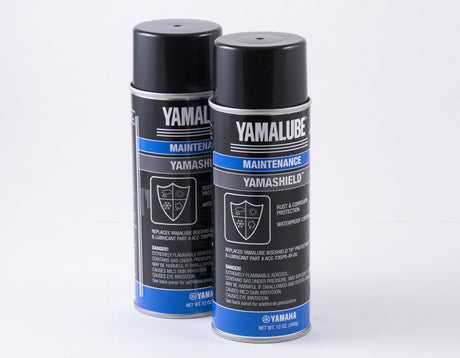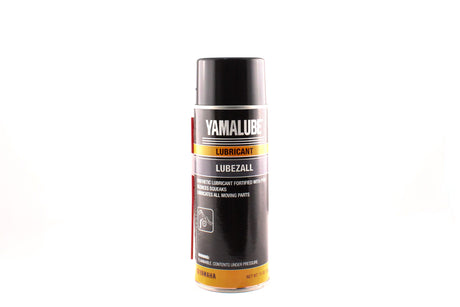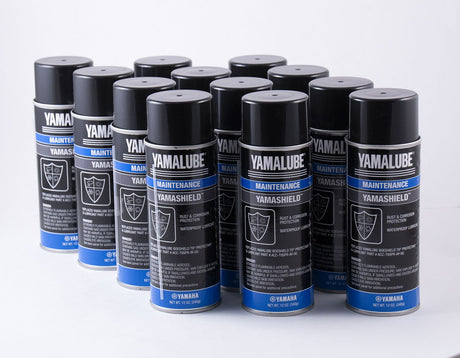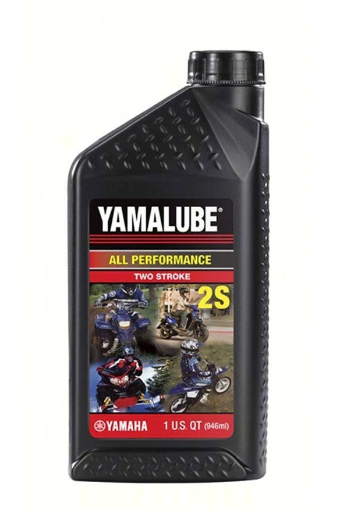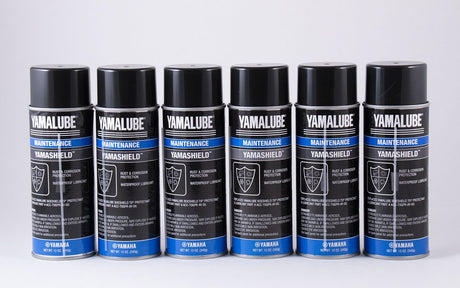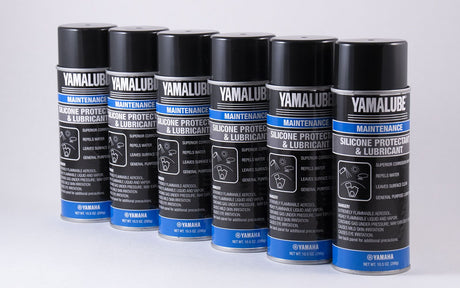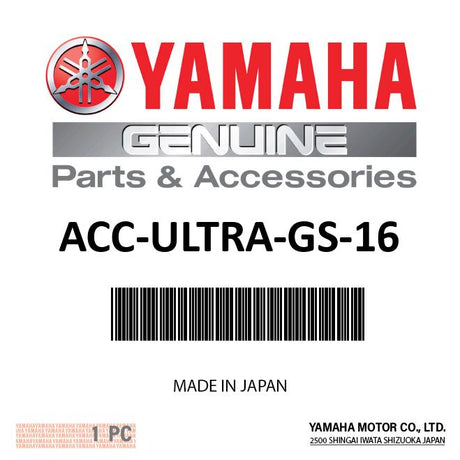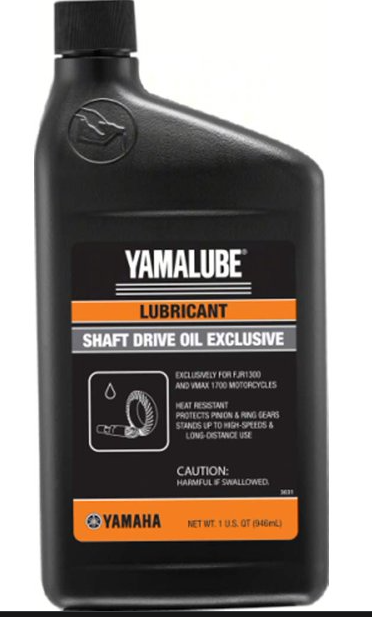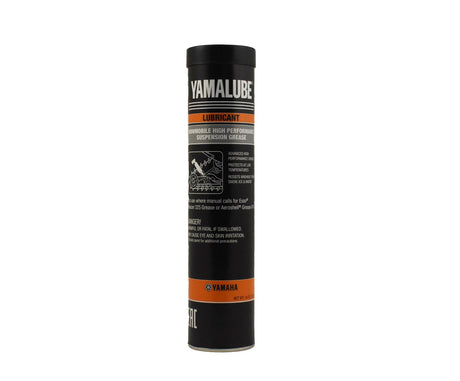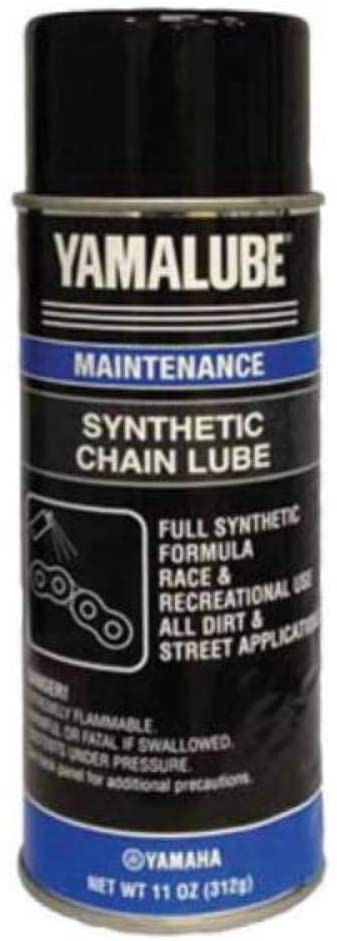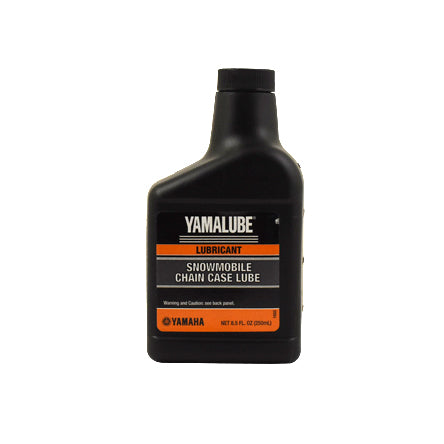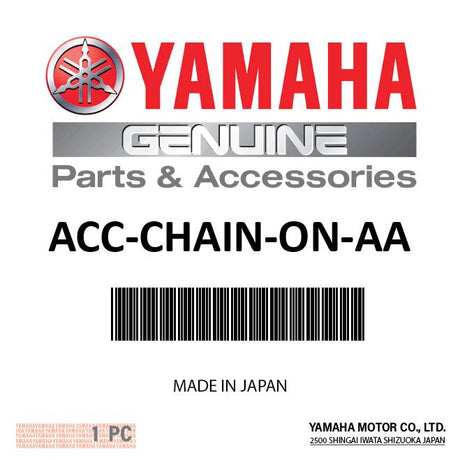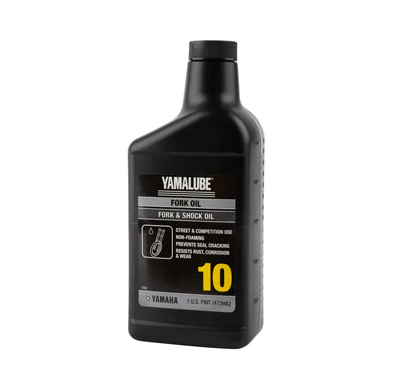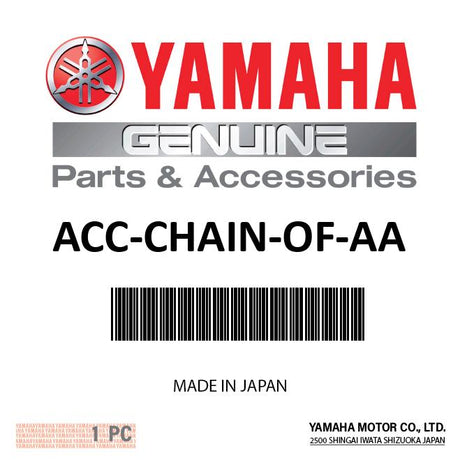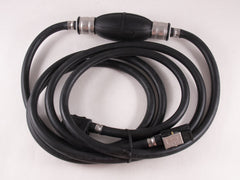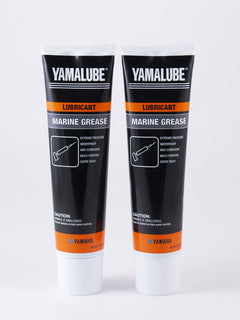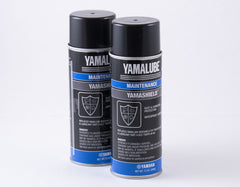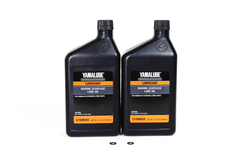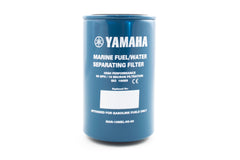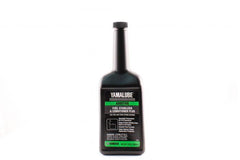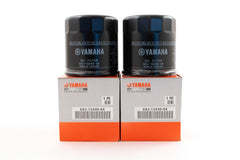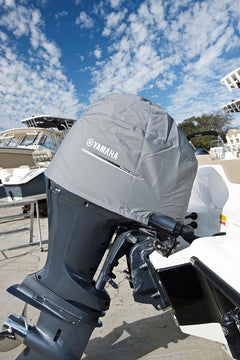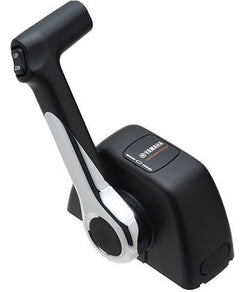Yamaha
Yamaha ACC-YAMSH-LD-00 - Yamashield Rust & Corrosion Protectant - 12 oz. Spray Can
$10.45 USD$10.99 USDUnit price /UnavailableYamaha
Yamaha ACC-SLCNS-PR-AY - Yamalube Marine Silicone Spray Lubricant - 10.5 oz.
$9.70 USD$9.99 USDUnit price /UnavailableYamaha
Yamaha ACC-YAMSH-LD-00 - Yamashield Rust & Corrosion Protectant - 12 oz Spray Can - 2-Pack
$20.90 USDUnit price /Unavailable-
 Shop Now
Shop NowYamaha Spring Essentials
Yamaha
Yamaha ACC-SLCNS-PR-AY - Yamalube Marine Silicone Spray Lubricant - 10.5 oz. - 2-Pack
$19.40 USDUnit price /UnavailableYamaha
Yamaha ACC-YAMSH-LD-00 - Yamashield Rust & Corrosion Protectant - 12 oz Spray Can - 12-Pack
$125.40 USDUnit price /UnavailableYamaha
Yamaha LUB-2STRK-S1-12 - Yamalube 2S 2-Stroke All Purpose Engine Oil - 32 oz
$11.94 USD$11.99 USDUnit price /UnavailableYamaha
Yamaha ACC-SLCNS-PR-AY - Yamalube Marine Silicone Spray Lubricant - 10.5 oz - 12-Pack
$116.40 USDUnit price /UnavailableYamaha
Yamaha ACC-YAMSH-LD-00 - Yamashield Rust & Corrosion Protectant - 12 oz Spray Can - 6-Pack
$62.70 USDUnit price /UnavailableYamaha
Yamaha ACC-SLCNS-PR-AY - Marine Silicone Spray Lubricant - 10.5 oz. - 6-Pack
$58.20 USDUnit price /UnavailableYamaha
Yamaha ACC-ULTRA-GS-16 - Ultramatic grease - 1lb/6ct
$9.72 USD$9.99 USDUnit price /UnavailableYamaha
Yamaha ACC-SHFTD-EX-00 - Shaft drive oil excl 32oz
$22.05 USD$24.99 USDUnit price /UnavailableYamaha
Yamaha ACC-SMBGR-SE-14 - Snwmbile high-perf susp grease
$10.45 USD$10.99 USDUnit price /UnavailableYamaha
Yamaha ACC-SYNCH-AI-NL - Synthetic chain lube 11oz
$7.85 USD$8.99 USDUnit price /Unavailable
Yamalube Lubricants & Corrosion Inhibitors
YamahaOnlineParts.com stocks a complete selection of Yamalube lubricants and corrosion inhibitors. Yamaha has produced some excellent products to help preserve your outboard. Yamashield protects exposed surfaces from the outside environment. Yamalube Silicone Protectant & Lubricant works to guard against rust and other forms of deterioration on metals, as well as protect neoprene, rubber, and other surfaces.
To help you service your Yamaha OEM parts and accessories with Yamalube products, we also offer these helpful resources:
- Yamaha outboard engine schematics
- Winterizing Yamaha Outboard Motors - Here's How
- Yamaha Ring Free Plus – Is It Essential?
- Guide to Yamaha Outboard Fuel Filters
- Corrosion Prevention - How to Protect Your Yamaha Outboard
Yamalube Corrosion Inhibitors and Lubricants FAQs
Why is Yamaha outboard corrosion prevention important?
The avoidance of corrosion for Yamaha outboards is a key factor in ensuring the longevity of your engine and it is important to act quickly. Corrosion can manifest itself both externally and internally and can set in very quickly. Even those boaters who operate in freshwater must take steps to protect the motor from corrosion, as rainwater can still have corrosive properties. Therefore, it is essential to be vigilant in your efforts to prevent corrosion.
YamahaOnlineParts.com can offer the necessary items that could help thwart some sorts of outboard corrosion, but it is up to you to make sure you use them regularly. Corroding can affect many areas of your outboard like the interior, fuel system, cooling water passageways, and electrical connections as well as exposed metal components on the outside. Fortunately, you have a lot of assistance available, and we are here to lend a hand by demonstrating to you where to search and what to be mindful of.
Establishing a routine is beneficial. If your boat is in saltwater, there are small maintenance procedures that should be done after each use. Similarly, if you have a freshwater vessel, there are inspections that should be done periodically. Visual inspections are always necessary. Using Yamashield as a rust and corrosion inhibitor is highly advisable. If you are uncertain about the steps to take, YamahaOnlineParts.com can offer assistance.
What is “Dry Corrosion”?
Areas of your Yamaha outboard motor that are not in contact with the water, like the exhaust system, are prone to dry corrosion. The external parts of these exhaust components are cooled by the raw water in order to stop them from becoming too hot. Nowadays, fuel that is enriched with ethanol generates sulfate salts as a by-product when burned. These salts are extremely corrosive and become even more destructive when exposed to scorching temperatures.
Not rinsing the cooling system of a marine outboard motor on a regular basis can cause "hot spots" to form inside the exhaust components, which heightens the destructive qualities of sulfate salts. This results in corrosion from the inside out, which is why it is extremely important to flush the engine with clean water for 15 minutes after each use. Doing so helps the cooling system to operate at peak efficiency and keeps the passages free of debris, which lowers the temperature of the engine and helps to prevent dry corrosion.
Why is it important to flush my Yamaha outboard if I’m a freshwater boater?
Your Yamaha outboard motor uses the water it's in to cool itself down. However, this water - whether it be fresh or salt - contains pollutants that accumulate in the cooling system over time. Saltwater is especially damaging because it is corrosive and can form crystals when heated over 170 degrees, clogging the cooling system. For this reason, it is essential to rinse the engine with clean, fresh water after each use.
What are the three types of outboard engine corrosion?
Metals are always prone to marine corrosion when exposed to any type of water, including freshwater, brackish water, and saltwater. Starting from the point of production, metals are always in the process of reverting to the natural state that they were in before they were extracted from the Earth.
The three types of corrosion boaters typically work to manage are:
- Simple electrochemical corrosion
- Galvanic corrosion
- Electrolytic/stray current corrosion
The cause of all sorts of marine corrosion is an electrochemical process, but the speed of corrosion is different for each type. For instance, the process accelerates when multiple metals are brought together (galvanic corrosion) or when an electric current is applied (stray current corrosion). Although the outcomes of any of these corrosion types are usually similar - metal damage - the reasons behind them are various. We must figure out the type of corrosion and its real rationale to prevent similar issues from happening again.
How Do I Go About Freshwater Flushing of My Yamaha Outboard?
Utilizing the in-built flush fitting is a great strategy to adhere to, particularly if you are unable to take your boat out of the water or your outboard has two water intakes and you do not have the particular adapter. All you have to do is attach a garden hose to the intake side of the non-functioning outboard's in-built flush fitting, switch the tap to full power, and permit the pressure of the hose's water to do the job. Let the water run for fifteen minutes to guarantee that it goes through the entire cooling system numerous times. If your boat is out of the water, such as on a trailer or a lift, the freshwater will also trickle down and effectively clean the water pump as well as the cooling water passages of the lower unit.
The flush muff technique is the most commonly used and accepted way to flush out fresh water. Attach one end of a garden hose to a supply of fresh water, and the other end to the Yamaha Outboard Engine and Motor Flusher. This device wraps around the bottom part of the Yamaha engine to provide water to both sides of the raw water intake. Turn on the water until it squirts out the sides of the flush muff, then start the outboard in neutral. Keep the engine at no more than a fast idle (max 900 RPM) for 15 minutes. Increase the water pressure so there is a continuous stream coming out from under the flush muffs while the outboard is running, to make sure the engine gets its necessary cooling water.
What is galvanic marine corrosion?
Galvanic corrosion is typically the result of two dissimilar metals, such as aluminum and stainless steel, being joined together either physically or through an electrical system. This combination is then left to sit in an electrolyte, often the water that the boat is in, forming an immense wet cell battery of sorts.
When a link is established between the positive and negative terminals of a battery, electrons start to flow between the anodes and cathodes of the battery. On a vessel without rust protection, aluminum - the most reactive metal - serves as the anode and stainless steel - a less active metal - functions as the cathode. This results in the electrons moving from the anode to the cathode, which in turn causes a loss in the anode material and shows up as corrosion on the aluminum components.
A typical sign of galvanic corrosion is the emergence of paint blisters with a powdery white substance on the surface of the exposed metal. Areas like the bottom edge of the unit and the sides of the anti-ventilation plate are more prone to be the first ones to experience the corrosive effects. Although this type of corrosion is more detrimental than electrochemical corrosion, it can be managed and reduced when you comprehend the corrosion process.
It is essential to inspect for any potential flaws and put in place prudent preventive strategies. The initial line of defense should be to layer the metals with great paint to shield them from the electrolyte. Additionally, it is possible to introduce another metal, one that is more active than aluminum, into the system. This metal, which is more reactive, will act as an anode and provide protection to both the aluminum and stainless steel components. The key is to install the correct quantity of sacrificial anode material to protect all the aluminum and stainless steel that are either directly connected or hooked up to the vessel's electric system.


